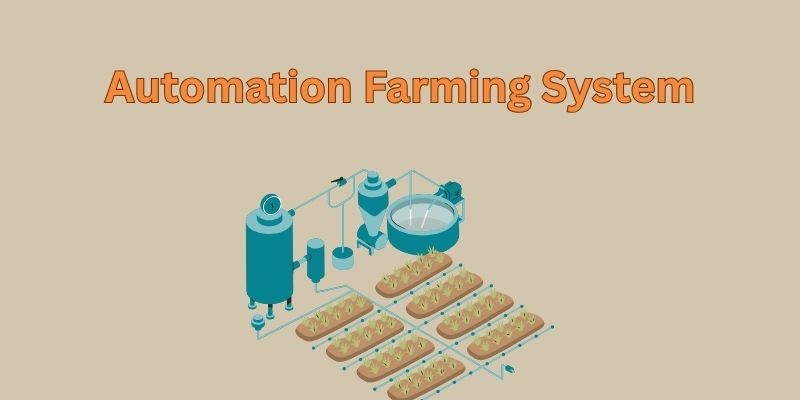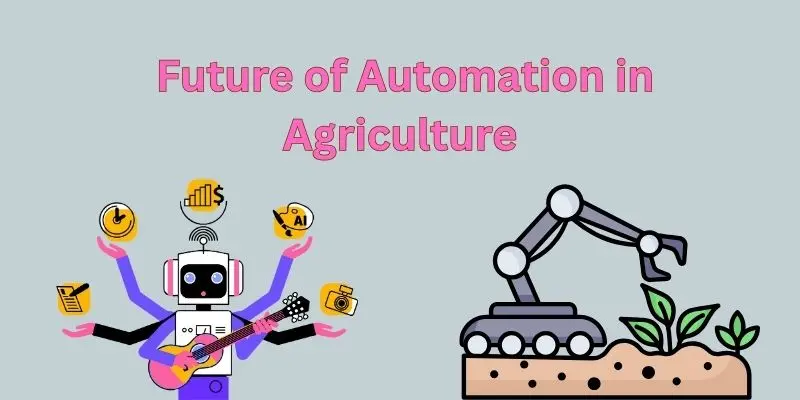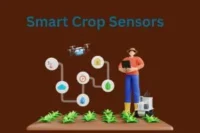Automation Farming System: Boosting Efficiency in Agriculture
Published: 6 Jun 2025
Farming today isn’t as simple as it used to be. Many farmers struggle with rising labor costs, unpredictable weather, soil degradation, and the constant pressure to produce more with fewer resources. Long hours, physically demanding work, and lack of skilled help are everyday challenges. With so much on their shoulders, it’s easy to feel overwhelmed and behind. That’s where automation farming systems come in—not to replace the farmer, but to make the job smarter, easier, and more efficient.
So, guys, without wasting time, let’s jump into the article to learn the pros and cons of the internet.
What is an Automation Farming System?
An automation farming system is a method of using advanced technologies—such as sensors, robotics, GPS, and software—to perform agricultural tasks with minimal human intervention. These systems are designed to improve the efficiency, accuracy, and productivity of farming operations by automating processes like planting, irrigation, fertilization, and harvesting.

- A system that uses technology to automate farming tasks.
- Involves tools like sensors, robots, drones, and software.
- Designed to increase efficiency and reduce manual labor.
- Common tasks automated include irrigation, planting, and harvesting
How Automation Enhances Efficiency
- Time-Saving: Machines work faster than humans and can run 24/7 without breaks.
- Precision Operations: Sensors and GPS enable accurate seeding, spraying, and fertilizing.
- Data-Driven Decisions: Real-time data collection helps farmers make better choices on water, fertilizer, and crop cycles.
- Lower Human Error: Automation reduces mistakes due to fatigue or inexperience.
Key Components of Automation Farming Systems
- Drones: Monitor crop health, map fields, and spray fertilizers or pesticides.
- Autonomous Tractors and Equipment: Perform fieldwork with minimal supervision.
- IoT Sensors: Track soil moisture, nutrient levels, and weather conditions.
- Farm Management Software (FMS): Centralizes data and streamlines planning.
- Robotics: For tasks like weeding, fruit picking, and planting.
Benefits for Farmers and the Agriculture Industry
- Higher Crop Yields: Precision techniques increase plant health and productivity.
- Reduced Costs: Less waste of water, fertilizers, and labor.
- Better Sustainability: Environmentally-friendly practices with reduced chemical use.
- Stress Reduction: Farmers can manage operations remotely and focus on strategy.
Real-World Examples of Efficiency Gains
- Case studies where farmers increased yield by 30% using smart irrigation.
- Examples of large farms reducing labor costs with robotic harvesters.
- Small farmers using smartphone apps for weather-based planting decisions.
Challenges and Considerations
- High Initial Costs: Setting up automation tools and equipment can be expensive, especially for small-scale farmers.
- Technical Skill Requirements: Farmers may need training to operate and maintain new technologies effectively.
- Maintenance and Downtime: Automated systems require regular updates and repairs, which can cause delays if not managed well.
- Data Privacy Concerns: Smart farming tools collect data, raising concerns about who owns and controls that information.
- Limited Internet Connectivity: Many rural areas still struggle with weak or no internet, making it hard to use cloud-based systems.
Future of Automation in Agriculture
- AI-Driven Decision Making: Artificial intelligence will analyze big data from farms to recommend precise actions for planting, irrigation, and harvesting.
- Fully Autonomous Farms: Future farms may operate with minimal human involvement using self-driving machines, robotic systems, and automated greenhouses.

- Advanced Crop Monitoring: Drones and sensors will provide real-time insights into crop health, enabling early detection of diseases and pests.
- Sustainable Smart Farming: Automation will help reduce water waste, chemical usage, and carbon footprint—making agriculture more eco-friendly.
- Wider Adoption by Small Farmers: As costs decrease, more small-scale farmers will gain access to affordable automation tools, bridging the tech gap.
FAQs about Automation Farming System
Here are some of the most frequently asked questions about the advantages and disadvantages of the Internet.
Yes! Automation in farming isn’t just one thing. It includes several systems like smart irrigation, autonomous machinery, drones, and more—each doing a different job on the farm.
Not quite. Traditional tractors need a person to operate them, but automated systems like self-driving tractors or robot harvesters work mostly on their own using sensors and GPS.
It may sound that way, but smart irrigation uses weather data and soil sensors to water crops only when needed—saving water and preventing over-watering.
Drones fly low and give real-time views of your crops, while satellites give bigger-picture images. Both help with crop monitoring but in slightly different ways.
Yes, absolutely! These apps let farmers track everything—soil, weather, equipment, and more—all from one screen. They help make smart decisions faster.
Conclusion
The content explores how automation farming systems use technologies like sensors, robotics, and AI to perform agricultural tasks with greater precision and less manual labor. It highlights key components such as smart irrigation, drones, and farm management software, and explains how these tools improve efficiency, increase crop yield, reduce costs, and support sustainability. Understanding these systems is crucial for modern farmers looking to stay competitive, save time, and adapt to growing demands in the agriculture industry.

- Be Respectful
- Stay Relevant
- Stay Positive
- True Feedback
- Encourage Discussion
- Avoid Spamming
- No Fake News
- Don't Copy-Paste
- No Personal Attacks

- Be Respectful
- Stay Relevant
- Stay Positive
- True Feedback
- Encourage Discussion
- Avoid Spamming
- No Fake News
- Don't Copy-Paste
- No Personal Attacks





